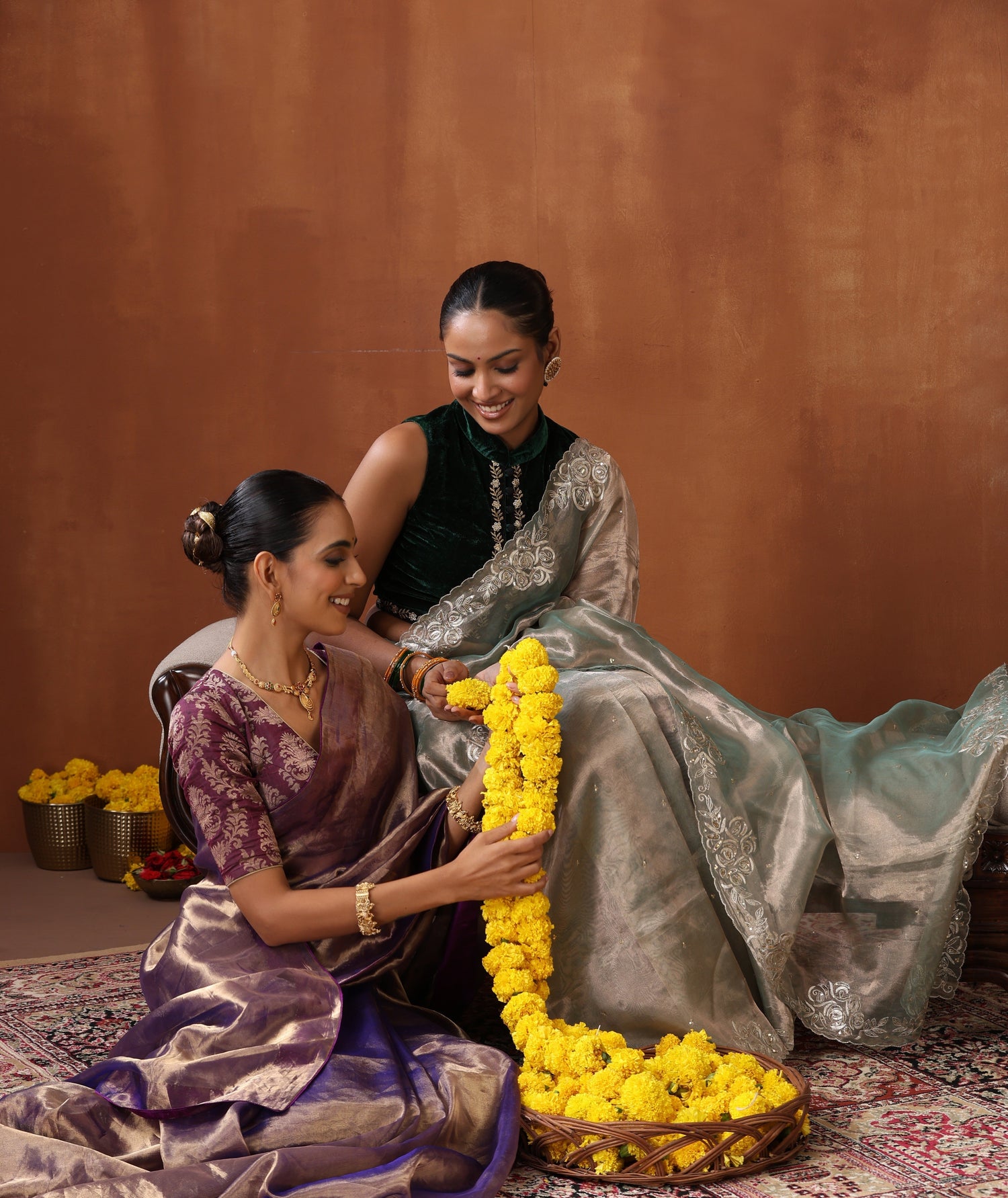National Handloom Day
The National Handloom Day is observed annually on 7th August in order to honour the handloom weavers in the country . This is also the day that is to commemorate and highlight the importance of India’s handloom industry,empower the Indian artisans and weavers and increase the income of the weavers.
This was the first launched by our Prime Minister Modiji on August 7th 2015 , which was an initiative by Government of India to honour and revive the importance of handloom Industry.National Handloom day is one of the important ways to give a boost to the skills and talents of the handloom weavers who are part of the Handloom Industry. With over 4.3 million people directly involved, the handloom industry is the second largest employment provider for the rural population in India after agriculture.
What is handloom?
A 'handloom' is a loom that is used to weave cloth without the use of any electricity.
It is a wooden frame, that is used to weave fabric. Hand weaving is done on pit looms or frame looms generally located in weaver's homes.
There are different types of handloom, from a rudimentary one used by tribal families, to a more sophisticated one which can weave multi-color and different styles of weaving. There are pitlooms (loom fixed atop a pit). In north-east India, wooden frame looms are popular. Tribal families mere weave a cloth, usually a wrap. In other States, more sophisticated ones are used , which are above the ground. Every loom requires pre-processing of the fibre, prepared to be mounted on the loom, as per the type. There are several tools, locally made and simple, that help in this pre-processing. This was a great invention in the 13th century.
What is the difference between Handloom and Power loom?
|
Handloom weavers and Banaras
Banaras is famous for its socioeconomic and religious importance all over the world.
Varanasi , as it is also known, is a religious city and a center of weaving flourished as the capital of Kasi Kingdom in the days of Buddha. Banaras remained a centre for weavers in the ancient period from the time of Guptas,Mauryas and went to its peak during the Mughal period.
In the post independence era in 1965,the Government of Uttar Pradesh, highlighted Varanasi for the importance of the silk fabrics and the hand embroidery work of the weavers of Banaras
Handloom weaving in India is an age-old tradition. Though the product being manufactured in the handloom clusters in India are same by their appearance and name, the activities and uniqueness of each of the clusters vary from one another. The same is the case with the brocade weaving tradition in India
The Banarasi brocade weavers of Varanasi are called karigars and the workshop is referred to as karkhana. Well organized, skilled and experienced weavers work collectively to perfectly produce the Banarasi brocade. A single loom weaver is known as a Bunker, and usually a group of ten to fifteen are managed by a karigar.
Some of the most famous sarees of the Banaras are (a) Banaras Silk Jamdani, (b) Jangla Saree, (c) Jamwar Tanchoi Saree (d) Tissue Saree, (e) Cutwork Saree and (f) Butidar Saree.
The skills of the Bunker are passed on from generation to generation. These craftsmen work under the management of the Banaras Handloom Cluster, whose main output is the saree. Sarees account for 90%- 95% of the total value of goods produced
Why Handloom?
Did you know that textile industry is the #1 polluter of the world’s waterways and the #2 source of greenhouse gases on Earth???
Instead of contributing to the problem, by using handloom we are looking to the past for answers to enhance our global textile industry while minimizing our environmental impact
The art of handloom is an ancient hand skill that has been passed down for generations and is threatened of being phased out in modern society. When we’re all so patriotic, have we ever thought why is our Handloom Industry dying?
The reality is that it takes 132 million metric tons of coal to power all the plants that produce fabric for the world. In contrast, making handloom cloth doesn't need to consume even one piece of coal. Handloom is done without electricity or emissions. The carbon footprint of handloom is so small that it is practically immeasurable.
Khinkhwab celebrates National Handloom Day
We, the team of Khinkhwab is all set to put forward this precious and regal form of art in front of the world. Promoting the handloom weavers, traditional designs, and gorgeous handmade Banarasi silk saree, Khinkhwab is a global platform that bridges the gap between handloom silk lovers and Banarasi silk art. We strongly believes in supporting handmade and the artisans and weavers in Varanasi.
"To save the craft, you have to be able to create awareness of what people go through. Look at grandmothers and that generation -- they always wore handloom... There was no other option. Handloom was for India, weather-wise, the best fabric.”” - says Indian fashion designers David Abraham & Rakesh Thakore
"What one wears is our emotions and thoughts" a passionate weaver once told us. He would sing while weaving, littering each fabric with his lyrics. Isn’t this a beautiful thought?
The handloom fabrics have special warmth as the weaver has made it with lots of hope and love. Next time you buy a handloom not just wear it but feel it.”
At this instance , we would like to remember Maharani Gayatri Devi of Jaipur wearing exquisite handloom saris, who did so much to promote indigenous textiles.


THANK YOU
Khinkhwab is certified by Handloom Mark and Silk Mark India as registered Merchant exporters and in promoting handloom and silk


If you are looking at supporting handmade and buy Handloom Banarasi silk sarees online you can find them all this one-stop shop, Khinkhwab - The Essence of Banaras
Email :- Info@khinkhwab.com Phone : +65-84998086
Like and follow us in Social media: Facebook | Instagram | Twitter | Pinterest









